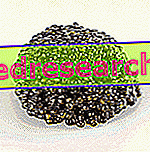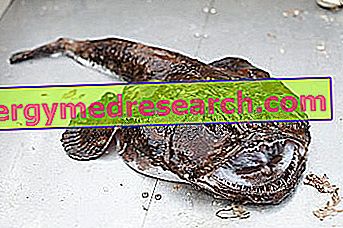Main Varieties
Caviar is a preparation based on salted fish roe, generally of sturgeon. On the market there are different varieties and each type is named after the fish from which they are extracted.

Sevruga ( Acipenser stellatus ) is a caviar with a strong flavor and a delicate aroma; the eggs are small (about 1 mm in diameter) and gray. It is generally sold in a red pack. The Sevruga sturgeon is small compared to other varieties and reproduces faster; for this reason it is sold at a lower price and is easier to find.
The Asetra or Osetra caviar ( Acipenser gueldenstaedtii colchicus), from Russia and Iran, has gray eggs and a flavor that vaguely resembles that of walnuts. It is generally sold in a yellow pack.
Karaburum caviar is a typical Iranian variety, similar to Asetra in color and taste.
Quality of Caviar
Generally the quality of caviar is greater the clearer the eggs. Based on this criterion it is classified into a prestige scale that includes three levels. The first one, called 0, is generally attributed to the darker colored eggs, the initials 00 and 000 are instead assigned, respectively, to the caviar of medium and light shades.
In addition to color it is important to evaluate other characteristics such as uniformity in size and consistency of the eggs, perfume, percentage in salt, etc.
The best quality belongs to the so-called "royal caviar", a variety of Osetra that boasts particularly appreciated organoleptic characteristics.
A good caviar must not have a fishy odor or spicy taste, at the same time the eggs must be well defined, uniform in size and not pressed. At the time of purchase it is good to choose products marketed in jar, so as to directly check the quality of caviar. It is also important to make sure that the cap and the packaging are free from swelling.
Before being marketed, Russian caviar undergoes a pasteurization process that slightly alters its nutritional and organoleptic characteristics. Iranian caviar does not need this treatment and, thanks to its special processing process, keeps its crunchiness intact.
Persia and Russia are among the main producers of caviar in the world and owe this primacy to the Caspian Sea, whose waters are populated by numerous sturgeons. This fish normally lives in coastal marine waters but in spring it goes up the rivers to reproduce, giving rise, in the evening, to spectacular leaps out of the water. Once the sturgeon was common also in the Adriatic and in the river Po, today its presence in the wild is occasional.
In our country there are farms where sturgeons are bred in captivity. Currently the Calvisius caviar , produced in Calvisano (BR) with the eggs of these fish, is enjoying great success in the international arena.
Use in the kitchen
Because of its delicacy and rarity, caviar is one of the most expensive and valuable foods. In the kitchen it is mainly used to embellish appetizers (like buttered canapés) and often enters the preparation of haute cuisine. Ideal is the combination with cold foods such as fish carpaccio, all accompanied with a brutally fresh Franciacorta.
Caviar should be stored in the refrigerator at not too low temperatures, so it can be stored in the top shelf. At the time of opening the package must be well sealed and the caviar contained in it must be consumed within a couple of days.
At School of Spherification - Strawberry Caviar
X Problems with video playback? Reload from YouTube Go to Video Page Go to Video Recipes Section Watch the video on youtubeNutritional Properties
From a nutritional point of view, caviar is a nutritious food, rich in protein, iron, phosphorus, magnesium and selenium. It is a good source of vitamins (A, E, D, riboflavin, pantothenic acid and B12)
Caviar is also rich in sodium and cholesterol, however, given the limited consumption that is normally made of this food, these values should not give rise to particular concerns. Caviar is also rich in omega three fatty acids which compensate for the negative effects associated with excess cholesterol.
POWER | 255 Kcal |
1067 Kjoule | |
water | 46.0 g |
Carbohydrates | 3.3 g |
Grassi | 15.0 g |
Protein | 26.9 g |
| Iron | 11.80 mg |
| Football | 276 mg |
| Phosphorus | 355 mg |
| Sodium | 2200 mg |
| Nutritional values CAVIAR | |



